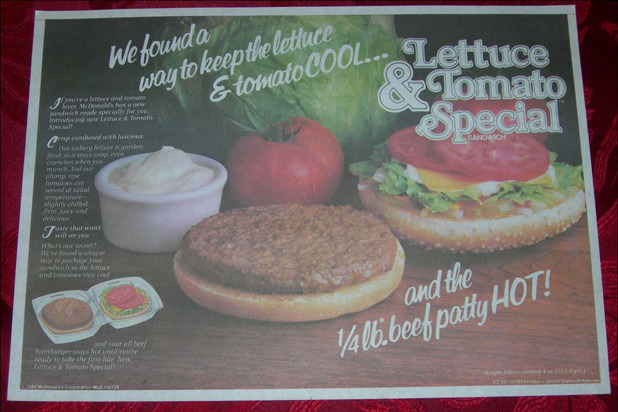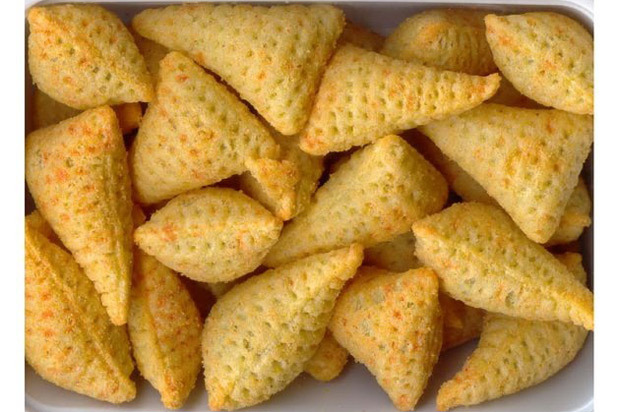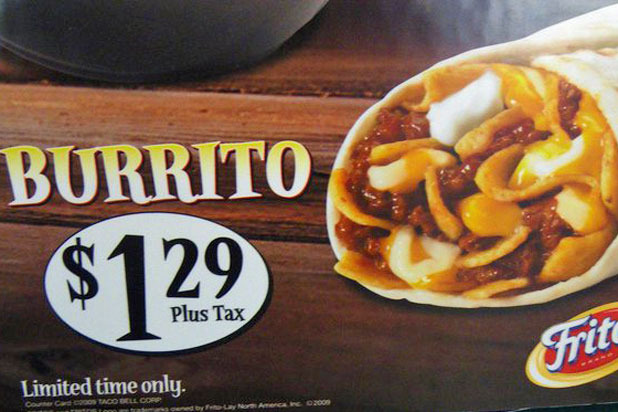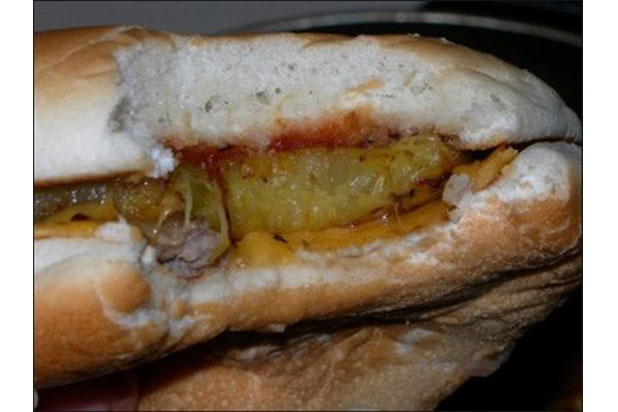Failed Products Of Major Brands Slideshow
In 1996 McDonald's decided to design a new menu item that would appeal to a more sophisticated, adult demographic — the result was the Arch Deluxe burger. The advertising campaign declared that the burger had a bun fresh from the bakery, 100 percent pure domestic beef, extra-fancy ketchup, and a new "secret sauce" made with mayonnaise and mustards. It's not surprising that the general public couldn't distinguish the new sandwich enough from the classic Big Mac to make it a hit.
Kellogg’s Breakfast Mates — Kellogg's
What's more appealing than adding warm, pre-packed milk to your breakfast cereal? Apparently everything. In 1998, Kellogg's launched a new product that they believed would revolutionize the breakfast on-the-go market: Breakfast Mates. Packaged right alongside the cereal, in a convenient single-serve box, was a container of shelf-stable milk and a plastic spoon. When the company realized that pouring a bowl of cereal with fresh milk was quick enough for most consumers, they discontinued the product one year after its launch.
McDLT — McDonald’s
Also known as the McDonald's Lettuce and Tomato, this product was great in theory but flopped in practice. Instead of serving the sandwich fully assembled, McDonald's served the McDLT in a two-sided container — the first side held the "hot" patty and bottom bun, and the second half held the "cold" lettuce, tomato, American cheese, pickles, and special sauce; the diner was expected to put the two halves together before digging in. Perhaps the only positive thing to come out of the McDLT creation is that the company employed a pre-Seinfeld Jason Alexander to star in the marketing campaign.
Heinz EZ Squirt — Heinz
Considering the love affair most children have with ketchup, this product seemed like a slam dunk. However, as most parents are the ones doing the buying at the grocery store, the idea of serving neon green, purple, blue, or "mystery" colored ketchup to their kids seemed more bizarre than genius. The product launched in 2000 and was discontinued in 2006 despite numerous attempts at marketing strategies.
Wow! Chips — Frito-Lay
In 1998 Frito-Lay unveiled their innovative line of fat-free chips with great fanfare and anticipation from diet-conscious Americans. In order to create the chips the company replaced the fat with Olestra, which subsequently caused major cramping and other digestive complications for many, many people. Needless to say, the product was discontinued a few years later.
Bell Beefer — Taco Bell
Instead of sticking by their former motto "Think Outside the Bun," Taco Bell introduced their first and only sandwich to the menu in the mid 1980s, the Bell Beefer. The sloppy Ioe-esque creation included all of the components of their signature beef taco piled onto a burger bun. Consumers complained that the sandwich was too messy, which is what ultimately led to the product's demise.
New Coke — Coca-Cola
Perhaps the most infamous flop in Coca-Cola's history was when the company announced on April 23, 1985, that they were changing the formula for their wildly popular soda. Although they had intended to revitalize interest in the brand with this new recipe, the public backlash was so strong that they returned to the original formula just a few months later.
BK Baguette Sandwiches — Burger King
In 2003, Burger King introduced a new line of chicken sandwiches aimed at appealing to a more health-conscious demographic — the BK Baguette Sandwiches. But the product never caught on in the U.S. and was quickly replaced with the TenderGrill Sandwich.
Jell-O For Salads — Jell-O
In the 1960s, Jell-O was not only popular as a sweet dessert, but many home cooks were using it in savory salads and molds as well. In response to the growing trend, Jell-O introduced a savory line of gelatin — available in celery, Italian seasoning, tomato, and mixed vegetable flavors. Unfortunately, the novel product line was just a bit too out-there for the general public's palate and Jell-O quickly discontinued it.
Doritos 3D — Frito-Lay
In the mid-2000s, Doritos took a break from manufacturing new flavors of their classic chips and instead introduced a product that took the chips themselves in a new direction — 3D Doritos. The air-filled Doritos came in several flavors and was marketed using a sexy advertising campaign, but ultimately, the brand pulled the chips off the shelves just a few years after their launch.
Hershey’s Swoops — Hershey's
When Hershey's began marketing Swoops in 2003 the product seemed like a sure hit — the slices of milk chocolate were shaped like Pringles and melted in your mouth, and they even came in a variety of flavors from Almond Joy to Peppermint Pattie — but for whatever reason the product never caught on. Some have suggested that consumers thought they were chocolate-dipped chips and were turned off by that. Swoops became history in 2006.
Crystal Pepsi — PepsiCo
The story goes that in the early '90s, when Ivory rebranded their classic white bar soap and introduced the clear bottled version, PepsiCo was so inspired that they decided to manufacture a clear, caffeine-free version of their iconic soft-drink. The company released the product in select test markets in 1992 and received an overwhelmingly positive response. However, when they released Crystal Pepsi nationwide, the response was surprisingly dismal. They discontinued the product one year later.
Colgate — Colgate Kitchen Entrees
For reasons that have never been fully explained, Colgate, the brand most famously known for its toothpaste, briefly launched a line of frozen dinners called Colgate Kitchen Entrees. However, the general public could not get past the association of the brand with Colgate toothpaste and the products were quickly pulled from production.
Taco Bell — Frito Burrito
This product seems like a good one in theory — a chili and cheese burrito stuffed with Frito chips for an added crunch. Perhaps Taco Bell was ahead of its time during the era of the Frito Burrito, considering the success of their recently launched Doritos Locos Tacos. Maybe they'll consider reintroducing the product, though, now that the general public is more open to experiencing chips in their Taco Bell dishes.
McDonald’s — The Hula Burger
In 1962, McDonald's founder Ray Kroc debuted a new meatless sandwich that he hoped would appeal to the chain's Lent-observing patrons. The resulting Hula Burger replaced the classic McDonald's patty with a slice of grilled pineapple topped with melted cheese — not surprisingly, the general public did not approve of the fruity, cheesy combination and McDonald's quickly discontinued the product.
Life Saver’s — Life Saver’s Soda
The popular hard candy company decided to create sodas based on the five flavors of the candy. The response from the public was that the carbonated beverage tasted like liquid candy, which was less than pleasant for most people.
Pizza Hut — The Priazzo
In 1985, Pizza Hut introduced the Priazzo, their attempt at recreating the Chicago deep-dish pizza. The pie included two crusts, stuffed with fillings and topped with tomato sauce and melted cheese. The Priazzo was available in three varieties: Milano, Florentine, and Roma. Despite an elaborate marketing campaign, the pizza lacked popularity, and the time that it took to prepare each pie caused Pizza Hut to discontinue the Priazzo after just a few years.
















